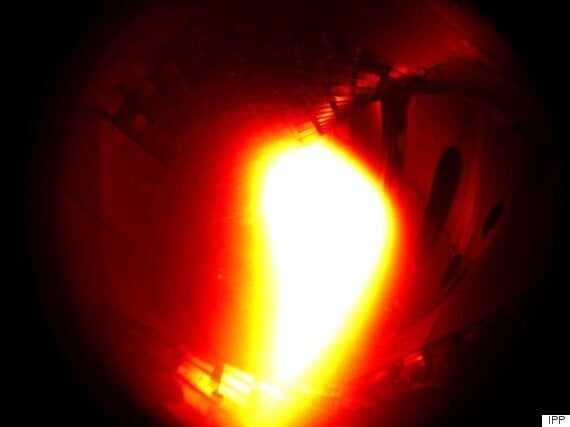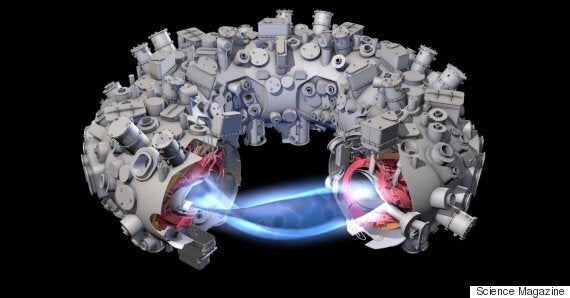Scientists have successfully tested the world's first full-scale 'stellarator' fusion reactor, proving that in the future, it could provide us with a safe, limitless source of energy.
Taking place at the Max Planck Institute for Plasma Physics (IPP) in Greifswald, scientists were able to suspend plasma within the fusion device for one tenth of a second at a temperature of one million degrees.

Cameras inside the device captured the plasma.
The plasma used was made from helium, however for the device to become fully operational they'll need to carry out the same process using hydrogen.
Project leader Professor Thomas Klinger said: We’re not changing over to the actual investigation object, a hydrogen plasma, until next year, this is because it’s easier to achieve the plasma state with helium. In addition, we can clean the surface of the plasma vessel with helium plasmas.”
SEE ALSO:
- This New Fusion Reactor Could Save The Planet
- >Lockheed Martin Unveils Compact Fusion Reactor Which 'Could Provide Limitless Clean Energy'
- Why It's Taking The U.S. So Long To Make Fusion Energy Work
- British 13-Year-Old Builds Fusion Reactor (AKA The 'Star In A Jar')
Nine years in the making, the Wendelstein 7-X fusion device has been designed by a supercomputer and built by humans. It utilises a revolutionary new design which could offer a safe, and practical way to get fusion power.
Fusion reactors give us the promise of a way out of the energy crisis. Capable of producing huge amounts of energy with few downsides it has become the holy grail of energy production.

It is extremely difficult to do however, and expensive. So far no fusion reactor has been able to produce more energy than is required to create it at any meaningful level.
On top of this, designs have varied greatly with safety becoming a major concern due in part to the huge burning ring of plasma that would be suspended in the middle of it.
Containing plasma in this state isn't just dangerous it's hideously difficult to do, however one group of scientists from the Max Planck Institute believe they may have the answer.